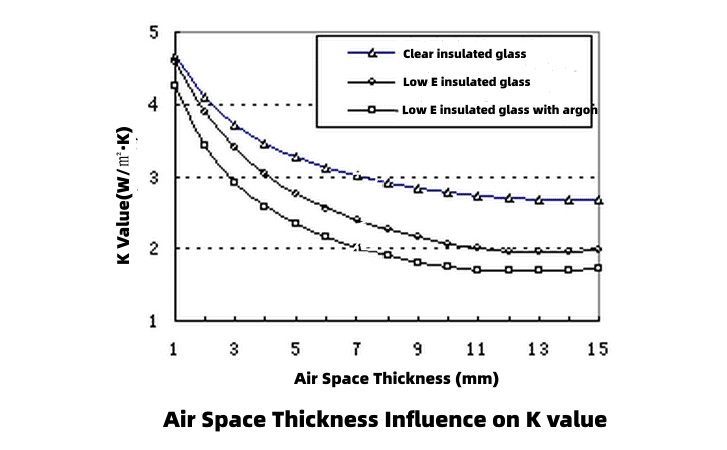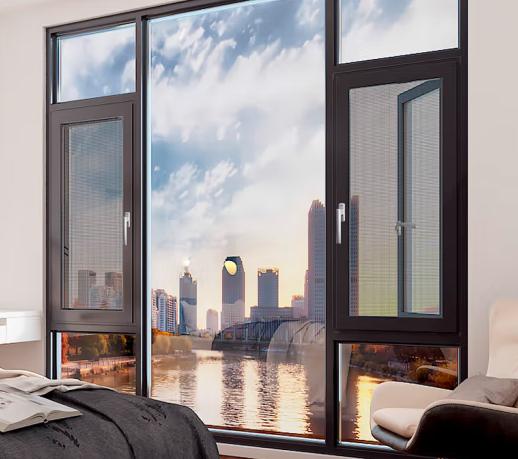Normally the thickness of the air space for insulated glass is 6mm, 9mm, 12mm and so on, the heat transmission resistance have directly relationship with the air space thickness. Under the same condition of glass, sealing structures, the thicker of the air space, the higher of the heat transmission resistance.
For example, the K value (China standard) of the insulated glass with single air space is similar with the U value (America standard in Winter). When the thickness of air space is 6mm, the K value is the highest, when the thickness of air space is 9mm, the K value dropped with 0.4[W/(㎡·K)], when the thickness of air space is 12mm, the K value is the lowest, so the 12mm thickness should be the best thickness for air space in China. When the thickness of air space increase again, the K value will also increase, this shows that it is not the thicker air space, the better K value.
Which caused such phenomenon? In fact, there are two ways for the gas layer to transfer heat. The first way is in the molecular aspect, the heat will be transferred to the other side through the collision between gas molecules. If the air space is thicker, the heat will lose more in the transfer process, then the thermal resistance will be higher if the air space is thicker, and the heat transfer will be less. The heat transfer by this way is reverse to the thickness of air space.
The second way is the directional gas flow. The gas which contact with hot glass surface (the indoor glass surface in Winter) will flow upwards after heating, meanwhile the gas which contact with cold glass surface (the outdoor glass surface in Winter) will flow downwards after cooling, then forming the gas circulation and heat transfer. When the air space is thinner, the gas circulation will be in small area which limited by the inner viscosity in the gas, then the transferred heat is small. But with the air space thickness is larger, the limitation by the inner viscosity is weak, then the gas circulation areas will be larger, the transferred heat will be more. This way to transfer heat is in direct ratio to the thickness of air space. Briefly speaking, when the air space is thin, the first way to transfer heat will be predominated, the K value will be lower with the air space is thicker. When the air space thickness to a certain degree, the second way to transfer heat will be predominated and have great influence, the K value will be higher now.
The temperature difference for the two side glass which near the air space is small, that is the hot glass surface isn’t hot enough, and the cold glass surface isn’t cold enough, then the gas which near the glass surface will have weak directional gas flow. The heat by gas flow will be predominated when the air space is thicker. So the most suitable thickness will be thicker with the temperature difference reduced between two glass pieces. The temperature difference between indoor and outdoor is nearly 40℃ under the China standard and America standard in Winter, then the most suitable thickness for the air space is 12mm. The temperature difference between indoor and outdoor is around 15℃ under the Europe standard, then the most suitable thickness for the air space is 16mm. The temperature difference between indoor and outdoor is only 8℃ under the America standard in Summer, then the most suitable thickness for the air space is 25mm.
Post time: Sep-06-2022


